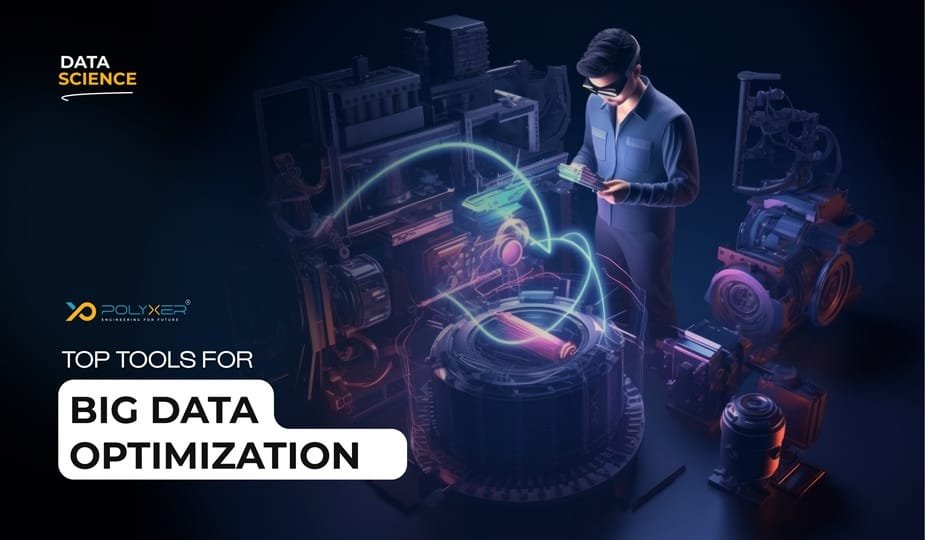
Smart Cities Powered by Data

Tackling Climate Change with Data-Driven Outcomes
In today's fast-paced and hyper-competitive trade scenario, organizations are constantly seeking new ways to gain an edge over their rivals. An important factor that distinguishes industry leaders from followers is their ability to effectively leverage data. Business Analytics- the practice of using data, statistical analysis and predictive modeling for decision making has become the cornerstone of competitive advantages across various sectors.
This newsletter explores how businesses can effectively utilize analytics, spectrum of analytical devices and techniques, and practical strategies to embed analytics in organizational DNA. We will also discuss challenges and future trends shaping the role of business analytics in creating sustainable competitiveness.
Understanding Business Analytics
Business analytics include various functions and technologies that enable organizations to create understanding of their data, generate insight and support data-driven decisions. It bridges the gap between raw data and actionable knowledge.
Types of Business Analytics
- Descriptive Analytics: It focuses on historical data to summarize what has happened. Some of the primary examples include dashboards, reporting tools and data visualizations.
- Diagnostic Analytics: It goes deeply to analyze why some things happened by highlighting patterns, correlations and root causes.
- Predictive Analytics: Uses statistical models and machine learning to predict future events based on historical data.
- Prescriptive Analytics: Assessing possible results recommends tasks, often leverages the optimization of techniques and simulation.
Planning the correct mixture of these analytics types empowers organizations to understand performance, predict trends and make optimized decisions.

Types of Business Analytics
The Competitive Edge through Analytics
Increased Decision Accuracy
Data-driven analytics can replace intuition and estimates with evidence-based insights. Businesses relying on analytics can identify operational inefficiencies with emerging market trends, customer preferences and high precision, making them capable of making better strategic and strategic decisions.
Enhanced Customer Experience
Understanding customer behavior and preferences at granular levels allows businesses to customize products, services and communication that resonate deeply. The predictive analytics helps to anticipate the needs of customers, enabling active engagement and loyalty.
Operational Efficiency and Cost Reduction
Analytics streamlines operations by identifying bottlenecks, waste, and opportunities for automation. Real -time monitoring and procedures reduce customization costs and increase throughput, increasing profitability.
Innovation and New Revenue Streams
Analytics highlighted the customer's needs and emerging market gaps. They allow businesses to innovate aligned products and services with data-driven insights and detect new monetization models.
Risk Mitigation
Predictive and prescriptive analytics identify potential risks, market disruption and compliance issues. The firms can continuously optimize, protecting their property and reputation.

The Competitive Edge through Analytics
Core Components of Successful Business Analytics Programs
Data Quality and Management
Accurate and timely data analytics are the foundation of success. Organizations should invest in data cleansing, integration and government framework to ensure data reliability and accessibility to the system.
Skilled Analytics Talent
The correct combination of data scientists, analysts and domain experts is important. Cross-functional cooperation between analytics and commercial units enhances relevant understanding and impact.
Scalable Analytics Platforms
Modern analytics require scalable infrastructure that is capable of processing large versions of structured and unstructured data. Cloud computing platforms offer flexible resources and advanced analytics tools.
Alignment with Business Goals
Analytics initiative must be closely linked to organizational objectives and key performance indicators (KPI). This alignment ensures that analytics provide average business value.
Change Management and Culture
Adopting analytics demands a culture that gives importance to data-driven decision making, encourages experimentation, and tolerates failure. Leadership commitment and training programs play an important role.

Core Components of Successful Business Analytics Programs
Examples of Business Analytics Applications for Competitive Advantage
Customer Segmentation and Targeting
Leveraging clustering algorithms and predictive models, businesses can design marketing campaigns fragmented by behavior and demographics which increase conversion and reduce acquisition costs.
Supply Chain Optimization
Analytics identifies the demand pattern, adapts to the inventory levels, and streamlines the logistics routes, reduces the cost and improves the speed of supply.
Fraud Detection
Financial institutions and retail vendors use algorithms to detect discrepancy to identify suspicious transactions in real time, reduce losses and enhance trust.
Pricing Strategy
Dynamic pricing models use demand forecast and competitive data to customize prices, to maximize revenue and market share.
Product Development
Product usage data helps identify popular features and pain points, guides repetitive improvement and innovative feature design.

Examples of Business Analytics Applications for Competitive Advantage
Challenges in Harnessing Business Analytics
Data Silos and Integration Issues
Fragmented data in the system disrupt overall analysis. It is important to integrate uneven data sources but is often technically challenging.
Managing Data Privacy and Ethics
Handling the customer and sensitive data responsibly while following rules such as GDPR and CCPA is both a legal obligation and a trust factor with customers.
Analytical Complexity
Advanced analytics techniques require significant expertise and computational resources, which can be difficult to acquire for small organizations.
Resistance to Change
The transfer of organizational mindset from intuition-based to data-driven decisions can withstand resistance. Communication and stakeholder engagement are required to overcome resistance to change.
Measuring ROI
Due to indirect gains and long -term effects, determining the financial impact of analytics initiative can be complicated.

Challenges in Harnessing Business Analytics
Strategies to Overcome Challenges
- Establish a Data Governance Framework: Define data standards, ownership and policies to ensure data integrity and compliance.
- Invest in Training and Talent Development: Existing employees and recruiting analytics professionals.
- Adopt Modern Technology Stacks: Leverage cloud-based tools, AI and machine learning platforms for scalability and agility.
- Promote Analytics Champions: To adopt analytics, identify and empower advocates within business units.
- Focus on Quick Wins: Display price through pilot projects that provide quick benefits in analytics journey.

Strategies to Overcome Challenges
Real-Life Case Studies of Business Analytics
Case Study 1: Amazon — Leveraging Business Analytics to Transform Retail
Overview:
Amazon is renowned for bringing revolution in retail through its untiring attention to customer experience and operational excellence. With millions of products and customers worldwide, Amazon generates mass data daily. Their ability to utilize business analytics has played a central role in maintaining their competitive edge.
Analytics Implementation:
Amazon uses advanced business analytics to personalize recommendations, optimize pricing and streamline supply chain logistics. Customer behavior data, purchase history, and browsing patterns feed the recommended engines that suggest individual products, significantly promote conversion rates and average order values.
On the operational side, Amazon applies predictive analysis and demand forecast models to effectively manage inventory in warehouses globally. Ensuring real-time analytics monitor order supply and distribution routes, quick and cost-efficient logistics.
Results:
- Personal recommendations contribute more than 35% of Amazon's total revenue.
- Inventory optimization reduces stockouts and additional inventory, reduces operational costs.
- Delivery route reduces analytics shipping time and improves customers' satisfaction.
- Continuous analytics-driven innovation maintains the market leadership and agility of Amazon.
Case Study 2: Starbucks — Data-Driven Customer Engagement and Store Optimization
Overview:
A global coffeehouse chain Starbucks has successfully used business analytics to increase customer engagement and customize store performance. The company collects data from loyalty programs, point-of-sale systems, mobile apps and social media.
Analytics Implementation:
By analyzing purchase behavior, preferences and location data, Starbucks segments its customer base for tailor marketing campaigns and product offerings. Personalize promotion based on mobile order and pay features, order and user data, supported by analytics.
Starbucks applies location analytics to customize store placements and evaluate new markets. Decisions of Heatmap and Foot Traffic Data Guide to open new outlets or re-design existing ones to increase customer flow and sales.
Results:
- Data-driven marketing campaigns have increased customer retention and expenditure.
- Mobile app users contribute significantly to increased revenue with high engagement rates.
- Strategic store location planning has improved overall profitability and customer reach.
- Starbucks continues to leverage data for product development and innovation in customer experience.
Future Trends in Business Analytics
Augmented Analytics
Using AI and machine learning to automate data preparation, insight generation and explanation, makes analytics more accessible and actionable for business users.
Real-Time Analytics
With the increase of IoT and streaming data, businesses will rely on real -time analytics to rapidly react to market changes and operating events.
Explainable AI (XAI)
Developing transparent AI models that provide understandable arguments for predictions will enhance trust and facilitate regulatory compliance.
Data Democratization
Empowering employees at all levels with self-service analytics tools will drive more informed decisions throughout the organizations.
Integration of Analytics with Automation
Robotic process automation (RPA) and AI-driven operations with analytics will be enabled with closed loop optimization where insight triggers direct tasks.

Future Trends in Business Analytics
Wrapping Up
Using business analytics is no longer optional - it is mandatory for organizations trying for a competitive edge. By converting data into actionable insights, businesses attain the clarity and agility necessary to estimate the dynamics of the market, optimize operations, to satisfy customers and innovate continuously.
Successful organizations embed analytics deeply in their culture, technology and strategy, ensuring that it serves as a foundation for every business decision. They invest wisely in data quality, talent and technology, a commitment to overcoming challenges with clear governance and continuous improvement.
As analytics technologies advance and data volumes grow rapidly, the organizations which master business analytics, who can confidently lead in their industries, can empower themselves.
Embracing a data-driven future is not just a strategic advantage—it is the pathway to thriving in the digital age.
This Article is also here






